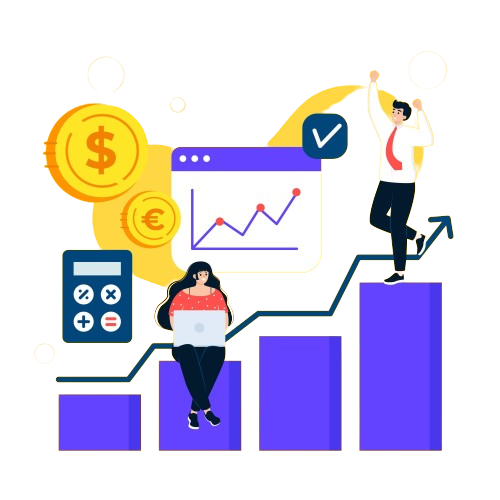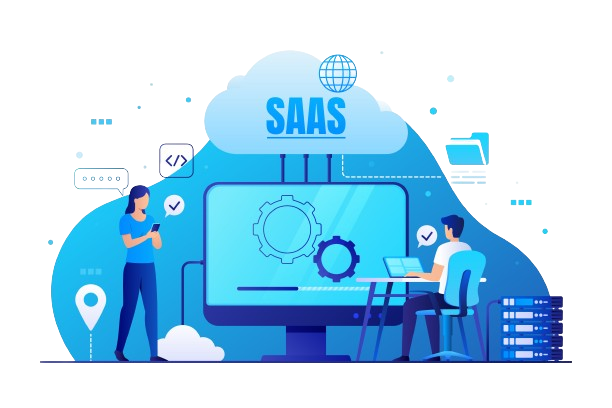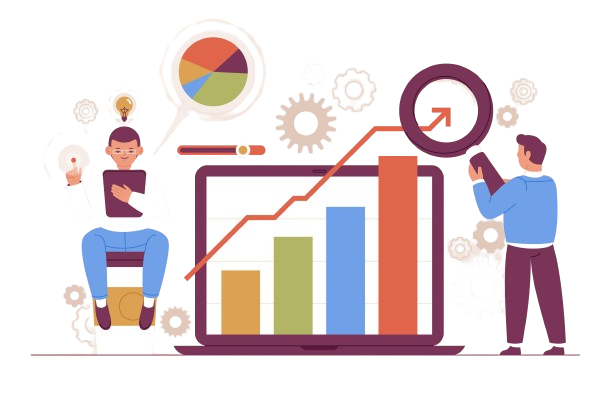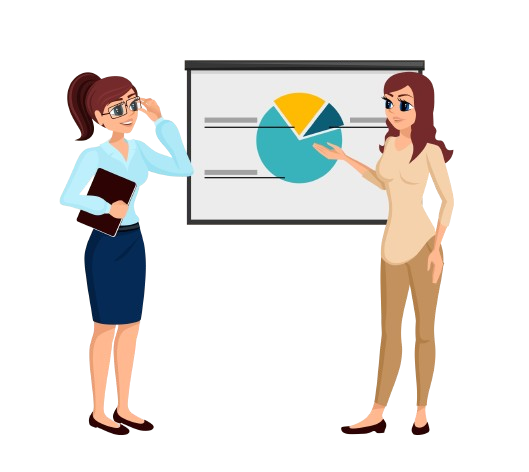 In SaaS business, pricing strategies play an important role in the success and sustainability of businesses. Traditional pricing models are giving way to more dynamic and responsive approaches, with automation emerging as a revolutionary element.
In SaaS business, pricing strategies play an important role in the success and sustainability of businesses. Traditional pricing models are giving way to more dynamic and responsive approaches, with automation emerging as a revolutionary element.
Why Automation Matters?
Automation in SaaS pricing through CRM and invoicing software involves the use of advanced technologies to streamline and optimize the process of setting, adjusting, and managing product or service prices. This departure from manual, static pricing models allows businesses to adapt swiftly to market changes, customer behaviors, and competitive dynamics.
Key Components of Automated SaaS Pricing
- Data-Driven Decision Making: Automated SaaS pricing relies heavily on data analytics. By harnessing vast amounts of data, businesses can gain insights into customer behavior, market trends, and competitor strategies. This data-driven approach enables more accurate and informed pricing decisions.
- Dynamic Pricing Algorithms: Unlike fixed pricing models, dynamic pricing algorithms allow businesses to adjust prices in real-time based on various factors such as demand, seasonality, and competitor pricing. This agility ensures that businesses can optimize their pricing strategy for maximum profitability.
- Personalization and Segmentation: Automated pricing and billing enable businesses to personalize their pricing strategies for different customer segments. By tailoring prices to the unique needs and behaviors of specific customer groups, businesses can enhance customer satisfaction and loyalty.
- Efficiency and Time Savings: Automation reduces the manual effort in pricing decisions. This not only saves time but also minimizes the risk of human errors in pricing. The efficiency gains from automated processes allow businesses to focus on strategic aspects of pricing rather than routine tasks.
The Evolution of SaaS Pricing Models
 Over the years, SaaS pricing models have undergone a significant transformation. Traditional models often involved fixed pricing tiers and lengthy contracts, limiting business and customer flexibility. The evolution of SaaS pricing can be traced through several key phases:
Over the years, SaaS pricing models have undergone a significant transformation. Traditional models often involved fixed pricing tiers and lengthy contracts, limiting business and customer flexibility. The evolution of SaaS pricing can be traced through several key phases:
- Per-User Pricing: Initially, many SaaS providers adopted a per-user pricing model, where the cost was determined by the number of users accessing the software. While straightforward, this model didn’t always align with the value derived by different users.
- Feature-Based Pricing: Recognizing the need for more flexibility, feature-based pricing emerged. Customers were charged based on the specific features or functionalities they needed. This allowed for a more tailored approach but could still result in the underutilization of certain features.
- Usage-Based Pricing: As cloud computing gained prominence, usage-based pricing models became popular. Businesses paid for the resources or services they consumed, offering a more scalable and cost-effective solution. However, predicting usage accurately could be challenging.
- Tiered and Freemium Models: Modern SaaS pricing often involves tiered plans and freemium options. Customers can choose from different plans based on their needs, and freemium models offer basic services for free with the option to upgrade for additional features. This approach provides flexibility and allows for easier customer acquisition.
The introduction of automation to SaaS pricing marks the next phase in this evolution. Businesses are now empowered with tools and technologies that enable them to set competitive prices and adapt to changing market dynamics in real time. In the next few sections of this blog, we’ll be exploring how businesses can leverage these advancements to stay ahead in the competitive SaaS world.
Navigating The Competitive Landscape of SaaS Pricing Strategies

Staying competitive requires a nuanced understanding of the landscape, particularly when it comes to pricing strategies. Analyzing your rivals’ approaches and identifying market trends and demands are integral steps in ensuring your business not only keeps pace but also takes the lead. Let’s dig into these crucial aspects to leverage automated SaaS pricing effectively.
Analyzing Rivals’ Pricing Strategies
Understanding your competitors’ pricing strategies is akin to dissecting a puzzle where each piece contributes to the larger picture of market dynamics. Here are key considerations:
- Price Point Comparison
- Identify Competitors: Enumerate and scrutinize your direct and indirect competitors in the SaaS market.
- Compare Price Points: Analyze the pricing tiers, subscription models, and additional charges to discern patterns.
- Value Proposition Evaluation
- Features vs. Cost: Evaluate how your rivals balance features and costs to offer a compelling value proposition.
- Customer Segmentation: Understand if their pricing caters to specific customer segments or industries.
- Promotional Strategies
- Discounts and Bundles: Examine if competitors use discounts, promotions, or bundle offerings as part of their pricing strategy.
- Contract Lengths: Investigate if there are incentives tied to longer subscription commitments.
- Feedback and Reviews
- Customer Perception: Analyze customer reviews and feedback to gauge satisfaction with competitors’ pricing structures.
- Areas of Improvement: Identify pain points customers express related to pricing.
Identifying Market Trends and Demands

A proactive approach to identifying market trends and demands ensures your pricing strategy aligns with current and future customer expectations. Here’s how you can navigate this terrain:
- Market Research
- Industry Reports: Stay abreast of industry reports highlighting emerging trends and shifts in customer preferences.
- Surveys and Feedback: Conduct customer surveys to understand their evolving needs and expectations.
- Technological Advancements
- Integration of New Technologies: Consider how emerging technologies impact the perceived value of your SaaS offering and, consequently, its pricing.
- Automation and AI: Explore the role of automation and AI in shaping pricing strategies and customer experiences.
- Regulatory Changes
- Compliance Requirements: Be mindful of regulatory changes that may impact pricing structures, especially in heavily regulated industries.
- Global Considerations: Understand how international regulations might influence your pricing approach in a global market.
- Customer Behavior Analysis
- Usage Patterns: Analyze customer usage patterns to tailor pricing plans that align with their needs.
- Feedback Loops: Establish feedback loops to continuously adapt pricing to changing customer behaviors.
Thus, a thorough analysis of competitors’ pricing strategies combined with a keen awareness of market trends and demands positions your business strategically. By leveraging this knowledge, you can fine-tune your automated SaaS pricing strategy to meet and exceed customer expectations.
Benefits of Automated SaaS Pricing Using CRM Software

Taking benefit of automated pricing and billing through CRM software has become revolutionary for businesses aiming to optimize their pricing strategies. Two significant advantages of this approach are efficiency gains and time savings, along with improved accuracy and consistency.
- Efficiency Gains and Time Savings
Automating SaaS pricing through CRM systems streamlines and expedites numerous processes, resulting in remarkable efficiency gains for your business. Traditionally, pricing strategies required extensive manual work, from market research and competitor analysis to updating pricing tiers and implementing changes. With automated SaaS pricing using CRM, these tasks can be executed swiftly and seamlessly.
- Market Research Automation: CRM systems equipped with advanced analytics tools can automate the collection and analysis of market data. This includes monitoring competitors’ pricing structures, identifying emerging trends, and understanding customer preferences. By automating these tasks, businesses can stay agile and responsive to market dynamics without spending excessive time on manual research.
- Dynamic Pricing Adjustments: One of the key benefits of Automated SaaS Pricing is the ability to implement dynamic pricing models. CRM systems can be programmed to adjust pricing in real-time based on various factors such as demand, market conditions, and customer behavior. This not only ensures that your prices remain competitive but also allows for quick adaptation to changes in the business environment.
- Efficient Communication and Collaboration: CRM systems facilitate seamless communication and collaboration among different departments within an organization. Automated pricing and billing updates can be communicated instantly across sales, marketing, and finance teams, reducing the chances of miscommunication or delays. This interconnected workflow ensures that everyone is on the same page, contributing to overall operational efficiency.
- Improved Accuracy and Consistency
Automated SaaS pricing using CRM brings a higher level of accuracy and consistency to your pricing strategies, addressing common challenges associated with manual pricing methods.
- Data Accuracy: By automating data collection and processing, CRM systems minimize the risk of human error. This is particularly crucial in the context of pricing, where inaccuracies can lead to financial losses and damage to the business’s reputation. Automated systems ensure that pricing decisions are based on accurate and up-to-date information.
- Consistent Pricing Across Channels: In a multi-channel business environment, maintaining consistent pricing can be challenging. Automated SaaS pricing through CRM allows businesses to implement uniform pricing strategies across various sales channels, ensuring a seamless and standardized customer experience. This consistency helps build trust with customers and avoids confusion that may arise from pricing discrepancies.
- Compliance and Governance: Automated SaaS pricing using CRM enables businesses to implement and enforce pricing policies consistently. This is essential for compliance with industry regulations and internal governance standards. Automated systems can be configured to flag any deviations from established pricing guidelines, allowing for prompt corrective action.
These benefits extend beyond mere efficiency gains and time savings. The improved accuracy and consistency achieved through CRM automation contribute to better decision-making, enhanced customer satisfaction, and a stronger competitive position in the marketplace.
Key Components of an Automated SaaS Pricing Strategy
Several key components play a crucial role in optimizing pricing models for sustained success. These include:
- Data Analytics and Market Research
In the world of automated SaaS pricing, data reigns supreme. Data analytics and market research form the bedrock of any successful strategy. By leveraging advanced analytics tools, businesses can gain profound insights into customer behavior, market trends, and competitive landscapes. These tools sift through vast amounts of data, extracting valuable patterns and correlations that inform strategic decision-making.
- Customer Segmentation: Identify and understand different customer segments based on their preferences, usage patterns, and willingness to pay. Tailor pricing models to meet the specific needs of each segment.
- Competitor Analysis: Evaluate the pricing strategies of competitors to benchmark your offerings. Analyze their successes and shortcomings to position your products or services more competitively.
- Demand Forecasting: Predict fluctuations in demand based on historical data and external factors. Adjust pricing dynamically to capitalize on peak periods and stimulate demand during slower times.
- Feedback Loops: Establish mechanisms for collecting and analyzing customer feedback. Use this information to refine pricing structures, ensuring they align with customer expectations and market realities.
- Dynamic Pricing Algorithms
At the heart of an automated SaaS pricing strategy lies the implementation of dynamic pricing algorithms. These algorithms allow businesses to adjust prices in real time based on various factors, ensuring optimal revenue generation and responsiveness to market dynamics.
- Real-Time Market Changes: Dynamic pricing algorithms continuously monitor market conditions, taking into account factors such as demand, competition, and seasonality. By reacting swiftly to changes, businesses can maintain a competitive edge.
- Personalization: Tailor pricing to individual customer behaviors and characteristics. Dynamic algorithms consider a customer’s history, preferences, and usage patterns to offer personalized pricing, enhancing customer satisfaction and loyalty.
- Optimizing Discounts and Promotions: Automatically adjust discounts and promotions based on predefined criteria. This ensures that promotions are targeted to the right audience at the right time, maximizing their impact on sales.
- Agile Response to Competitor Pricing: Track and respond to changes in competitor pricing in real time. Dynamic pricing algorithms can automatically adjust your prices to remain competitive, preventing revenue loss due to price misalignment.
Incorporating these key components into your automated SaaS pricing strategy creates a robust foundation for success. The result obtained is a pricing strategy that is not only competitive but also agile, responsive, and finely tuned to meet the evolving needs of customers and the market.
Choosing the Right Software Solutions To Implement automated SaaS Pricing and Billing Tools

Implementing automated pricing and billing tools is a strategic move that can significantly impact the success of your SaaS business. Choosing the right CRM billing software is crucial to ensure seamless integration, accurate results, and the ability to adapt to dynamic market conditions. Here’s a detailed guide on how to make informed decisions when selecting automated pricing and billing tools for your business:
- Define Your Business Needs: Begin by clearly defining your business objectives and the specific goals you aim to achieve with automated pricing and billing. Consider factors such as revenue growth, competitive positioning, and customer satisfaction. Understanding your unique needs will guide your choice of pricing software.
- Assess Data Compatibility: Evaluate the compatibility of potential software solutions with your existing data infrastructure. The chosen tool should seamlessly integrate with your CRM, ERP, and other relevant systems to ensure a smooth flow of data for accurate pricing calculations.
- Scalability and Flexibility: Look for software solutions that can scale alongside your business. Scalability ensures that the pricing tools can handle growing data volumes and adapt to the evolving needs of your organization. Additionally, flexibility is key—choose a solution that allows for easy customization to accommodate changes in pricing strategies.
- Advanced Analytics Capabilities: Opt for software that offers advanced analytics capabilities. The ability to analyze historical data, identify patterns, and predict future trends is essential for developing effective pricing strategies. Look for features such as machine learning algorithms and predictive analytics to enhance decision-making.
- User-Friendly Interface: Consider the user-friendliness of the software interface. Your team members, including non-technical users, should be able to navigate the system easily. A user-friendly interface ensures efficient utilization of the software, reducing the learning curve for your team.
- Integration with Market Data: Choose a pricing tool that can integrate with external market data sources. Access to real-time market information ensures that your pricing strategy is responsive to changes in the competitive landscape, demand fluctuations, and other market dynamics.
- Cost and ROI: Evaluate the total cost of ownership, considering both upfront costs and ongoing expenses. Assess the potential return on investment (ROI) by estimating the impact on revenue, cost savings, and efficiency gains. While cost is important, prioritize solutions that offer the best value for your specific business requirements.
- Vendor Reputation and Support: Research the reputation of the software vendors. Read customer reviews, seek recommendations, and assess the vendor’s track record in providing reliable, responsive support. A vendor with a positive reputation and strong customer support can be crucial for a successful implementation.
- Security and Compliance: Prioritize software solutions that adhere to industry standards for data security and compliance. This is especially critical when dealing with sensitive customer data and financial information. Ensure that the chosen tool aligns with relevant regulations and follows best practices for data protection.
- Trial Period and Pilots: Whenever possible, opt for software solutions that offer a trial period or the ability to conduct pilot programs. This allows your team to test the functionality and performance of the pricing tools in a real-world environment before making a long-term commitment.
By carefully considering these factors, you can select the right CRM invoice software solutions to implement automated pricing and billing tools effectively, positioning your SaaS business for success in a competitive market.
Conclusion: Securing Your Competitive Edge
In wrapping up our exploration of “How to Leverage Automated SaaS Pricing Before Your Rivals,” let’s remember a few important things.
First off, implementing automated pricing needs a smart plan – from choosing the right tools to smoothly fitting them into your system.
Second, use data wisely. The better your data, the smarter your pricing decisions will be. Stay nimble and quick to change because the SaaS world moves fast.
Always keep your customers in mind, making sure your prices match what they value. Keep an eye on how well your pricing plan is working, adjusting as needed.
Look at what other successful businesses have done for inspiration, and don’t forget to stay up-to-date with the latest trends in the industry.
In a nutshell, making the most of automated pricing isn’t a one-time thing – it’s about always learning and adapting. So, keep evolving your strategy to stay competitive and successful in the long run.